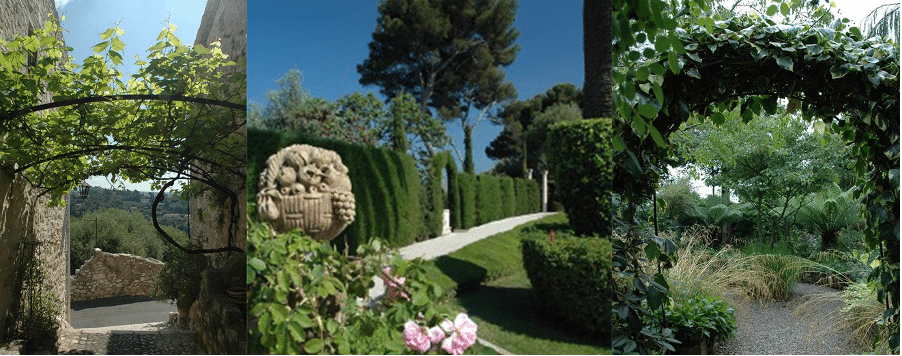Using Portals to Transform Your Garden

Portals create a sense of mystery and discovery in garden design.
Once upon a time, there was a network called HGTV. The letters stood for Home and Garden Television. After some time, the other letters kicked out the G because they mistakenly thought nobody wanted to watch anything garden-related. Okay. Not a true story, as some may have gathered but as always, I do love a creative intro. So, just where am I going with this, you may ask?
When my remote occasionally pauses on HTV, it inevitably stalls on one of those heavily scripted House Hunter episodes. I sometimes involuntarily cringe when I hear those too-familiar words “We want an open floor plan.” I have nothing against this concept, as our 80+-year-old house also has a bit of an open floor plan thanks to a kitchen remodel we did about 20 years ago. But one thing we still have and love are some wonderful arched openings that guide you from one room to the next. I call these portals, and this is now officially the longest, most roundabout intro I’ve ever used in one of these writings.

We’re used to the idea of portals inside the home. The same concept of passage holds true outdoors as well.
To me, a portal is a passageway and it is a key concept in successful and creative garden design. You’ve undoubtedly heard the phrase “outdoor rooms” when reading or hearing about garden design. Your front yard or public space may be considered a room as well as the all-important entryway. Likewise, those side areas of a home may also be viewed as rooms. These will lead to what I consider the most important room in the garden, the rear room, a private space in which one finds peace and solitude (unless your neighbor has one of those %$#! gas-powered leaf blowers – another story).

Three different portals/passageways using a variety of materials and scale.
When I use the word portal, I am speaking about the design and creation of an opening in a buffer that separates the different rooms, providing a passageway to such. To picture this concept another way, imagine walking through a gap in a knee-high wall. Then picture raising this wall to waist level and doing the same. Next, go a bit higher with this to shoulder level and place an arch or pergola overhead. In each case, you would get the feeling of passing from one place/room to another but it isn’t until the last with the completion of an overhead structure that you truly feel as though you have entered another zone. Of course, this isn’t nearly as fun or dramatic as when Frodo slips his finger through the ring but it is a key to success in adventurous garden design. (See illustrations below)

The height of the buffer/divider as well as having an overhead structure has an impact on the portal experience.
A portal can be made of a variety of materials. Depending on one’s budget this can range from stone to brick to wood or steel. But it may also be something as simple as a doorway cut into a massive hedge or a low tree branch to help divide the spaces. To be truly successful it is key to have something overhead.
I think this is a good place to wrap it up and keep these writings short and to the point. Hopefully, the images will also help you to envision how portals are the passageways in our gardens and help us truly feel a progression of movement.
Till next time,
HAPPY GARDENING!
Please share and subscribe! https://ahomeforyourgnome.com/

